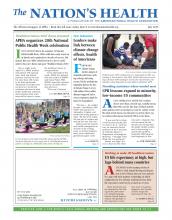Having food visible throughout the home is closely tied to obesity, according to a recent study.
The findings come from research published online April 28 in the International Journal of Obesity.
Interventions that involve modifying use of the home environment are not always as successful in helping people lose weight and keep it off, said lead study author Charles Emery, PhD, a professor of psychology at Ohio State University.
“We thought we should go in the opposite direction by going into their homes and looking at the way they set them up and identifying predictors that will help us clarify factors that could be used to help them lose weight and maintain the loss,” Emery told The Nation’s Health.
Over two weeks, researchers looked at 100 people who are obese and non-obese and recorded the participants’ number of food storage spaces, such as freezers and cabinets, the amount of exercise equipment and number of televisions. Participants also said where they usually ate meals, what they did while eating and who was with them.
The study found there were no differences between the amount of food obese people and non-obese people had in their homes but the obese participants had food spread out across more visible locations — not just the kitchen — where it was readily accessible, the study said.
Obese participants had more refrigerators and freezers, and reported a longer distance between their favorite place to eat meals and snacks to the food in their home. They also reported more food insecurity and ate at fast food restaurants more often, the study said. Food insecurity is defined as not having regular access to adequate food due to factors such as affordability.
“I think one of the themes that comes out of our data is this theme that despite the obese individuals having more food on average than non obese, there was greater food insecurity in obese individuals,” Emery said. “So there is a dimension of concern or preoccupation with food and that may be linked to a whole host of individual factors. That’s an important feature to address more directly in weight loss programs.”
Participants also answered questions about how their social lives and how their weight affected their quality of life. Obese participants reported having less confidence about controlling eating behavior and more barriers to social interactions, the study said.
“One of the other findings that’s important is that low self-esteem was an especially strong predictor of obesity and that is a largely neglected dimension in the realm of weight loss interventions for adults,” Emery said. “Self-esteem gets a lot of attention in weight loss programs for children and adolescents. That’s an important dimension to consider carefully in programs for adults and especially to the degree that it may overlap with depression.”
For more information, visit www.nature.com/ijo/journal/vaop/naam/abs/ijo201570a.html.
- Copyright The Nation’s Health, American Public Health Association









